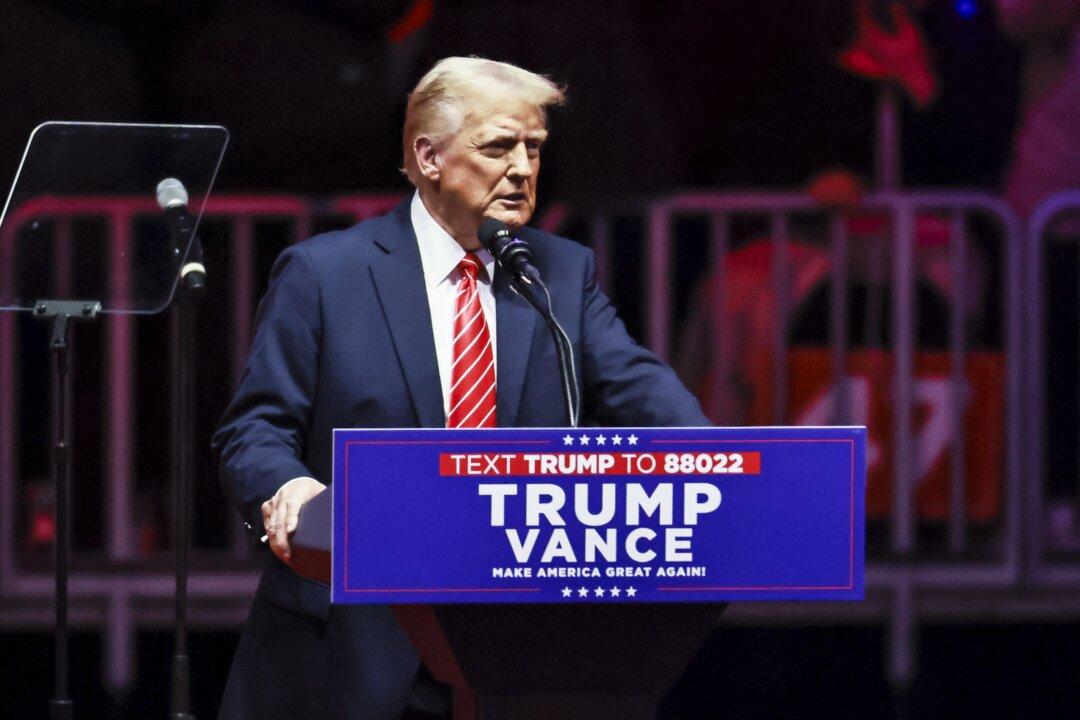Former CIA Director John Brennan on Oct. 6 accused the Trump administration of selectively declassifying agency records for political gain.
Brennan’s notes describe an intercept of Russian intelligence claiming that Hillary Clinton approved a plan to stir up a scandal about then-candidate Donald Trump by linking the Trump campaign and the alleged Russian hack of the Democratic National Committee.
The vast majority of both documents was blacked out prior to release, making it impossible to ascertain the full context of the portions released to the public.
“These were my notes from the 2016 period when I briefed President Obama and the rest of the National Security Council team about what the Russians were up to and I was giving examples of the type of access that the US intelligence community had to Russian information and what the Russians were talking about and alleging.”
Bellow Brennan’s notes on the alleged Clinton plot there are several bullet points grouped under the headings “POTUS,” the acronym for president of the United States; “JC” the initials for FBI Director James Comey; “Dennis,” the first name of White House Chief of Staff Dennis McDonough; and “Susan,” the first name of national security adviser Susan Rice.
The only bullet point that isn’t blacked out falls under Obama’s name and states, “Any evidence of collaboration between Trump campaign & Russia.”
“If, in fact, what the Russians were alleging that Hillary was trying to highlight the reported connections between Trump and the Russians, if, in fact, that was accurate—and that’s a big if—there is nothing at all illegal about that,” Brennan said.
“John Ratcliffe and others are trying to portray this as potentially unlawful activity that deserves follow-up investigation by the FBI. No. It was a campaign activity.”
The former CIA director said that on Sept. 7, 2016, the CIA referral to the FBI declassified by Ratcliffe was one of many counterintelligence operational leads (CIOL) forwarded to the bureau by the agency.
“There are a lot of other CIOL’s that talk about the contacts that were taking place between individuals associated with the Trump campaign and the Russians,” Brennan said. “So [Ratcliffe] might want to think about trying to balance some of these releases by providing information to the American public about what the intelligence community had unearthed during this period of time about Russia’s interactions with those involved in the Trump campaign.”
The CIOL was addressed to Comey and FBI Deputy Assistant Director Peter Strzok. In testimony before the Senate Judiciary Committee on Sept. 30, Comey claimed to not remember receiving the lead.
In broad strokes, the alleged plan that Clinton approved on July 26, 2016, matches the allegations lodged in the July 31, 2016, memo that formally opened the investigation of the Trump campaign. The memo, authored by Strzok, describes a lead the FBI received from London about a meeting between Trump campaign adviser George Papadopoulos and Australian diplomat Alexander Downer. During the meeting, Papadopoulos allegedly told Downer that the Russians had “dirt” on Clinton.
Despite being dated, Downer’s tip was only given to U.S. authorities the day that Clinton allegedly approved the plan to dirty up the Trump campaign. Also on the same day, former British intelligence officer Christopher Steele drafted a memo claiming an extensive Russian government hacking operation. Steele drafted another memo on the day before Strzok opened the investigation of the Trump campaign, codenamed Crossfire Hurricane.
The Steele memos would later be part of the infamous Steele dossier, which the FBI used, without due verification, to obtain a warrant to spy on former Trump campaign foreign policy adviser Carter Page. The Department of Justice Office of Inspector General found that the applications for the warrant and subsequent renewals were riddled with major errors and omissions which implicated every official involved in the process. Former FBI attorney Kevin Clinesmith pleaded guilty last month to a false statement charge related to an email he forged as part of the warrant application process.
Clinesmith served as the main FBI attorney assigned to the special counsel investigation by Robert Mueller. After a 22-month inquiry, Mueller found no evidence of coordination between the Trump campaign and Russia.





